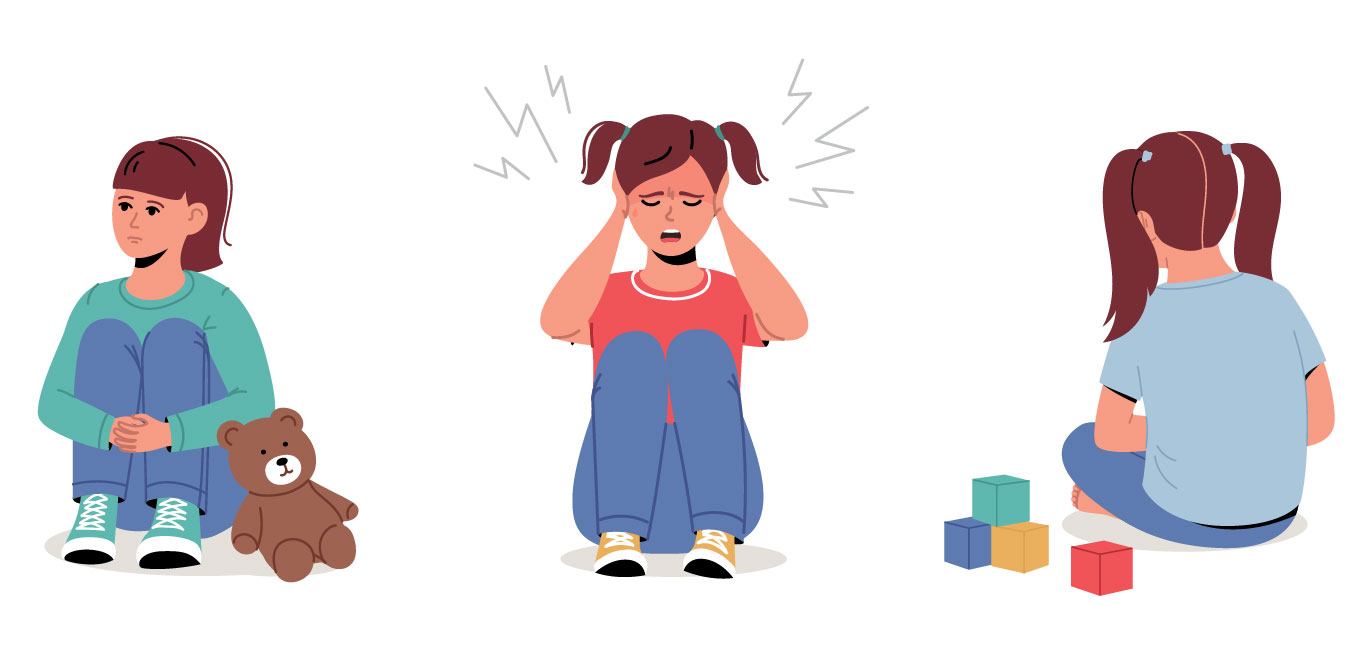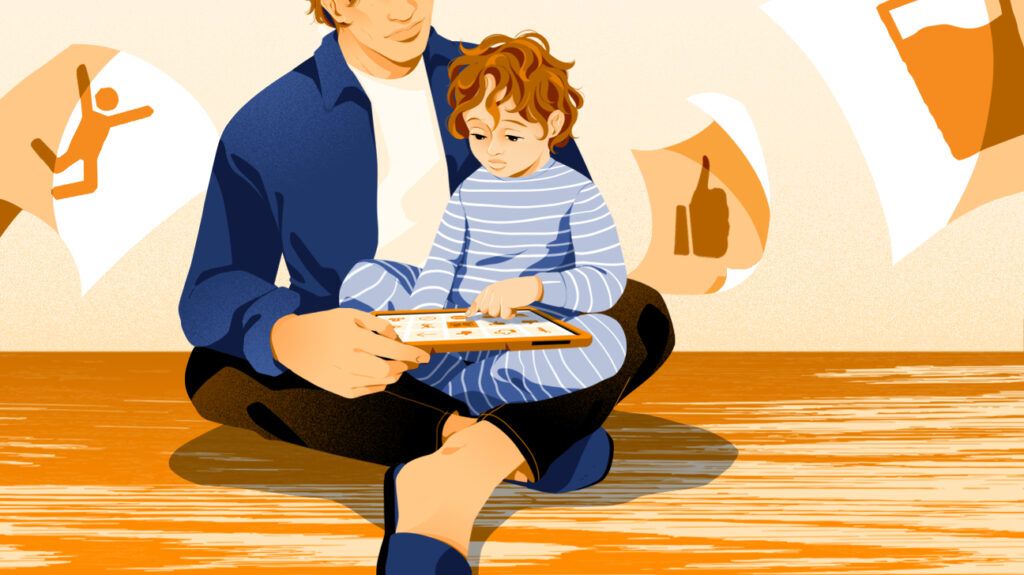
Introduction
Autism Spectrum Disorder (ASD) is a complex neurodevelopmental condition characterized by challenges in social interaction, communication, and repetitive behaviors. The increasing prevalence of autism has spurred interest in a wide range of therapies aimed at supporting individuals with ASD. While traditional therapies remain critical, natural therapies are gaining recognition for their holistic benefits, addressing physical, emotional, and social aspects of development. This article explores the significance of diverse, natural therapies and their potential to enhance the quality of life for individuals with autism.
Overview of Autism Spectrum Disorder (ASD)
Definition and Prevalence
Autism Spectrum Disorder (ASD) is a developmental disorder that affects how individuals perceive and interact with the world. The spectrum nature of autism means that it manifests differently in each person, ranging from mild to severe symptoms. Core characteristics of ASD include difficulties with social communication and interaction, as well as restricted and repetitive patterns of behavior, interests, or activities.
According to the Centers for Disease Control and Prevention (CDC), approximately 1 in 36 children in the United States is diagnosed with ASD. This increasing prevalence highlights the need for effective interventions and supports that can address the diverse needs of individuals with autism and their families.
Challenges Faced by Individuals with Autism
Individuals with ASD face a variety of challenges that can impact their daily lives and overall well-being. Common challenges include:
- Communication Difficulties: Many individuals with autism struggle with verbal and non-verbal communication. This can range from complete lack of speech to difficulty understanding and using language in social contexts.
- Social Interaction Issues: Building and maintaining relationships can be challenging due to difficulties in understanding social cues, empathy, and reciprocal communication.
- Behavioral Challenges: Repetitive behaviors, strict adherence to routines, and sensitivity to sensory inputs (like noise, light, or texture) are common. These can lead to significant distress and impact daily functioning.
- Cognitive Variability: Some individuals with autism have intellectual disabilities, while others may have average or above-average intelligence but struggle with executive functioning skills such as planning, flexibility, and organization.
These challenges often necessitate a multifaceted approach to therapy, incorporating various strategies to support development and quality of life.
Importance of Diverse Therapies
Traditional vs. Natural Therapies
Traditional therapies for autism, such as Applied Behavior Analysis (ABA), speech therapy, and occupational therapy, have been extensively studied and are widely used. These therapies focus on specific skill development and behavior modification, providing structured and evidence-based approaches to addressing the core symptoms of ASD.
Natural therapies, on the other hand, encompass a broader range of activities and interventions that aim to support the overall well-being of individuals with autism. These therapies often leverage the therapeutic benefits of nature, art, music, physical activity, and animal interaction. Examples include nature therapy, agrotherapy, animal-assisted therapy, and creative arts therapies.
While traditional therapies are essential, natural therapies offer complementary benefits that can address areas not fully covered by conventional approaches. They provide additional avenues for engagement, relaxation, and holistic development.
Benefits of a Holistic Approach
A holistic approach to autism therapy recognizes the interconnectedness of physical, emotional, and social health. Natural therapies can offer numerous benefits:
- Enhanced Well-Being: Activities such as nature walks, gardening, and animal interaction can reduce stress and anxiety, promoting emotional well-being.
- Sensory Integration: Engaging with natural environments and sensory-rich activities can help individuals with autism improve their sensory processing and reduce sensitivity.
- Social Skills Development: Group-based natural therapies provide opportunities for social interaction, teamwork, and communication in a less formal setting.
- Physical Health: Therapies involving physical activity, such as yoga, martial arts, and dance, contribute to overall physical fitness and motor skill development.
- Creativity and Expression: Art, music, and drama therapies offer creative outlets for self-expression, helping individuals convey emotions and thoughts that may be difficult to articulate verbally.
- Family Involvement: Many natural therapies encourage family participation, strengthening bonds and providing a supportive network for the individual with autism.
By integrating natural therapies into a comprehensive treatment plan, parents and caregivers can provide a rich, supportive environment that nurtures all aspects of development, enhancing the quality of life for individuals with autism.

Why Natural Therapies?
Natural therapies offer a range of benefits that complement traditional interventions for autism spectrum disorder (ASD). By incorporating natural therapies into treatment plans, individuals with autism and their families can experience holistic development and improved quality of life. Here are some key reasons why natural therapies are valuable:
Individualized Approach
- Tailoring Therapies to Unique Needs and Interests: Unlike one-size-fits-all approaches, natural therapies can be customized to meet the specific needs and interests of individuals with autism. This personalized approach enhances engagement and maximizes therapeutic benefits.
Holistic Development
- Addressing Physical, Emotional, and Social Needs: Natural therapies encompass a wide range of activities that target various aspects of development. From physical activities like gardening and yoga to emotional outlets like art therapy and animal-assisted therapy, these interventions promote holistic well-being.
Non-Invasive and Low Risk
- Safe Alternatives to Medical Treatments: Natural therapies typically have fewer side effects and risks compared to medical interventions. Engaging in activities like nature walks, creative arts, and animal interaction provides therapeutic benefits without the potential drawbacks of medication or invasive procedures.
Family Involvement
- Strengthening Family Bonds and Empowerment: Many natural therapies emphasize family participation, fostering stronger connections and empowering parents and caregivers. By engaging in activities together, families can create meaningful experiences and support each other in the journey with autism.
Encouraging Active Lifestyle
- Promoting Physical Activity and Outdoor Time: Natural therapies encourage individuals with autism to engage in physical activity and spend time outdoors. Whether it’s through nature walks, gardening, or sports activities, these interventions promote an active lifestyle, which is beneficial for physical health and overall well-being.
Enhancing Life Skills
- Teaching Practical Skills and Encouraging Creativity: Natural therapies provide opportunities for individuals with autism to learn practical life skills and express themselves creatively. Activities like cooking, art, and music therapy not only enhance skills but also foster independence and self-confidence.
Reducing Screen Time
- Offering Alternative Activities to Technology Use: In today’s digital age, excessive screen time can be detrimental to individuals with autism. Natural therapies offer alternative, screen-free activities that stimulate the senses and promote social interaction, reducing reliance on technology.
Community and Social Interaction
- Building Social Skills and Support Networks: Participating in natural therapies provides opportunities for individuals with autism to interact with peers and build social skills in a supportive environment. Whether it’s through group activities or community-based programs, these interventions foster a sense of belonging and create support networks.
Incorporating natural therapies into autism treatment plans can have a profound impact on individuals’ lives, promoting holistic development, fostering meaningful connections, and empowering families to navigate the journey with autism with confidence and resilience.

Types of Natural Therapies
Natural therapies encompass a diverse array of interventions that leverage the therapeutic benefits of nature, creative expression, physical activity, and animal interaction to support individuals with autism spectrum disorder (ASD). Here are various types of natural therapies along with their benefits and associated activities:
Nature Therapy (Ecotherapy)
Benefits:
- Stress reduction
- Sensory experiences
- Physical activity
Activities:
- Forest walks
- Gardening
- Beach visits
Love Therapy (Attachment-Based Therapy)
Benefits:
- Emotional bonds
- Trust
- Emotional regulation
Activities:
- Parent-child bonding exercises
- Positive reinforcement
Agro Therapy (Agriculture-Based Therapy)
Benefits:
- Responsibility
- Sensory experiences
- Teamwork
Activities:
- Farming
- Animal care
- Gardening
Cooking Therapy
Benefits:
- Fine motor skills
- Practical life skills
- Following instructions
Activities:
- Guided cooking
- Sensory exploration
- Group classes
Art Therapy
Benefits:
- Communication
- Emotional expression
- Creativity
Activities:
- Drawing
- Painting
- Sculpting
- Sensory art projects
Music Therapy
Benefits:
- Communication
- Mood enhancement
- Cognitive function
Activities:
- Playing instruments
- Singing
- Listening to music
Animal-Assisted Therapy
Benefits:
- Anxiety reduction
- Social interaction
- Empathy
Activities:
- Therapy dog visits
- Horseback riding
- Pet care
Play Therapy
Benefits:
- Social interaction
- Problem-solving
- Emotional expression
Activities:
- Structured play
- Role-playing
- Interactive games
Yoga and Mindfulness
Benefits:
- Self-regulation
- Focus
- Body awareness
Activities:
- Guided yoga
- Breathing exercises
- Mindfulness activities
Sensory Integration Therapy
Benefits:
- Sensory processing
- Motor skills
- Behavior management
Activities:
- Swinging
- Sensory bins
- Weighted blankets
Social Skills Groups
Benefits:
- Communication
- Social interaction
- Confidence
Activities:
- Group games
- Role-playing
- Guided discussions
Dance and Movement Therapy
Benefits:
- Coordination
- Self-expression
- Social skills
Activities:
- Dance classes
- Free-form movement
- Group choreography
Drama Therapy
Benefits:
- Imaginative play
- Emotion exploration
- Communication
Activities:
- Role-playing
- Improvisation
- Performing skits
Martial Arts Therapy
Benefits:
- Self-discipline
- Motor skills
- Respect
Activities:
- Martial arts classes
- Self-defense
- Routines and sparring
Aquatic Therapy
Benefits:
- Sensory input
- Motor skills
- Relaxation
Activities:
- Swimming
- Water exercises
- Floating activities
Equine-Assisted Therapy (Equine Therapy)
Benefits:
- Trust
- Coordination
- Confidence
Activities:
- Horseback riding
- Grooming
- Ground-based activities
Mind-Body Practices (Tai Chi, Qigong)
Benefits:
- Relaxation
- Body awareness
- Focus
Activities:
- Guided sessions
- Specific movements
- Group classes
Wilderness Therapy
Benefits:
- Resilience
- Teamwork
- Nature exposure
Activities:
- Camping
- Survival skills
- Group hikes
Creative Writing Therapy
Benefits:
- Communication
- Self-expression
- Creativity
Activities:
- Journaling
- Story writing
- Writing workshops
Pet Therapy
Benefits:
- Emotional well-being
- Social interaction
- Companionship
Activities:
- Therapy animal visits
- Pet care
- Pet therapy programs
These natural therapies offer diverse opportunities for individuals with autism to engage in enriching activities that promote physical, emotional, and social well-being. By incorporating these interventions into comprehensive treatment plans, individuals with autism can experience holistic development and improved quality of life.

Encouraging Parents to Explore Natural Therapies
Parents play a crucial role in supporting the well-being and development of their child with autism spectrum disorder (ASD). Exploring natural therapies can offer additional avenues for growth and enrichment. Here are some strategies to encourage parents to explore natural therapies:
Research and Information
- Providing Clear and Accessible Information about Therapies: Offer parents resources and materials that explain the benefits and potential outcomes of various natural therapies. Ensure information is easy to understand and readily available, empowering parents to make informed decisions about their child’s care.
Starting Small
- Introducing One or Two Therapies Initially: Encourage parents to start with a manageable number of therapies to avoid overwhelm. By focusing on one or two interventions, parents can gauge their child’s response and determine which approaches are most beneficial before considering additional options.
Observation and Adaptation
- Monitoring Child’s Reactions and Progress: Encourage parents to closely observe their child’s reactions and progress during natural therapy sessions. Pay attention to changes in behavior, mood, and engagement levels. By staying attuned to their child’s needs, parents can adapt activities and interventions to better suit their preferences and challenges.
Consistency
- Integrating Therapies into Daily Routines: Stress the importance of consistency in natural therapy participation. Encourage parents to incorporate therapy activities into their child’s daily routine, making them a regular and predictable part of their schedule. Consistency helps reinforce skills and promotes ongoing progress.
Seeking Professional Guidance
- Working with Therapists, Educators, and Healthcare Providers: Emphasize the value of seeking professional guidance when exploring natural therapies. Encourage parents to consult with therapists, educators, and healthcare providers who have expertise in autism treatment. These professionals can offer personalized recommendations and support to ensure that therapies align with the child’s individual needs and goals.
By providing parents with research-backed information, practical strategies for implementation, and access to professional guidance, we can empower them to explore natural therapies effectively and support their child’s holistic development and well-being.

Conclusion
In conclusion, exploring natural therapies for individuals with autism spectrum disorder (ASD) offers a holistic approach to support their development and well-being. By incorporating a variety of natural interventions, individuals with autism can experience a range of benefits that address their physical, emotional, and social needs.
Recap of Benefits
Natural therapies provide holistic support for individuals with autism, offering opportunities for growth and enrichment across various domains. From stress reduction and sensory experiences to social interaction and skill development, these therapies contribute to the overall well-being of individuals with autism.
Empowering Parents
Empowering parents to explore natural therapies enables them to take an active role in their child’s therapy choices. By providing them with resources, information, and support, parents can make informed decisions that best suit their child’s unique needs and preferences.
Future Outlook
Looking ahead, continued research and integration of natural therapies in autism care hold promise for advancing treatment options and improving outcomes for individuals with autism. By expanding our understanding of the therapeutic benefits of nature, creativity, physical activity, and animal interaction, we can further enhance the quality of life for individuals with autism and their families.
Consider supporting the MEDA Foundation, an organization dedicated to advancing research, education, and support services for individuals with autism and their families. Your donation can make a meaningful difference in the lives of those affected by autism.
Resources
- “Natural Treatments for Autism Spectrum Disorder” by Skye Weintraub
- “Healing the New Childhood Epidemics: Autism, ADHD, Asthma, and Allergies: The Groundbreaking Program for the 4-A Disorders” by Kenneth Bock
- “The Autism Revolution: Whole-Body Strategies for Making Life All It Can Be” by Martha Herbert and Karen Weintraub
- “Uniquely Human: A Different Way of Seeing Autism” by Barry M. Prizant
- “Gut and Psychology Syndrome: Natural Treatment for Autism, Dyspraxia, A.D.D., Dyslexia, A.D.H.D., Depression, Schizophrenia” by Natasha Campbell-McBride
- “The Out-of-Sync Child: Recognizing and Coping with Sensory Processing Disorder” by Carol Stock Kranowitz
- “Autism Breakthrough: The Groundbreaking Method That Has Helped Families All Over the World” by Raun K. Kaufman
- “The Brain’s Way of Healing: Remarkable Discoveries and Recoveries from the Frontiers of Neuroplasticity” by Norman Doidge








